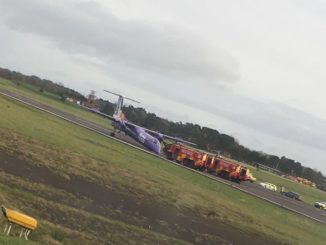
It has been just over 48 years since the crash of British European Airways Flight 548 which devastatingly cost the lives of all 118 people on board a BEA Hawker Siddeley Trident.
The aircraft suffered a deep stall shortly after takeoff, eventually coming down just south of the busy A30 road, a short distance from the town of Staines-upon-Thames. Hence, the accident was subsequently referred to as the Staines air disaster.
The flight was bound for Brussels Airport with experienced ex-RAF pilot Captain Stanley Key as P1, Second Officer Jeremy Keighley as P2 and Second Officer Simon Ticehurst as P3.
It is believed that many factors played a part in the crash of Flight 548, such as the crew failing to maintain the appropriate airspeed and flaps being retracted prematurely, however, there are also some underlying problems that may have been the cause of the accident.
A few hours before the flight, Captain Key was involved in an extremely heated debate with one of his BEA colleagues in the crew room about pilot strikes which were brewing at the time.
According to an Accidents and Investigations Branch pathologist, Key may have suffered some form of a heart attack anytime during the flight.
Moreover, the lack of crew training on how to deal with pilot incapacitation and the low experience of Second Officer Keighley may too have contributed to the crash.

How did this accident make modern-day aviation safer?
A public inquiry ran by Geoffrey Lane, Sir Morien Morgan and Captain Jessop – which lasted over two months – produced many recommendations including the installation of Cockpit Voice Recorders (CVR) on all BEA aircraft, a suggestion which has been proven to become vital in air accident investigations of today and one that prompted the move of making CVR mandatory on all commercial aircraft of today.
A Flight Data Recorder and a Cockpit Voice Recorder are often combined into one single unit known widely as a black box. Black boxes are essential for not only locating crash wreckages but uncovering every single detail of the flight and how it resulted in a crash. They can withstand up to 3,400 Gs and temperatures of 1,100°C.
The Lane report also highlighted that an off-duty colleague, Captain Collins, was sitting in the cockpit’s jump seat and may have been a distraction to the pilots flying – another possible reason why the pilots failed to notice their dangerously low airspeed.
This is known as ‘deadheading’ in the aviation industry and is common practice to transport the airline’s own staff for work-related reasons. Lane recommended that the airline takes greater caution when allowing off-duty crew members onto the flight deck, however, this was not put under scrutiny to the same extent.
It is worth noting however that evidence suggests Captain Collins attempted to save the aircraft from its fatal stall in the last moments of its flight.
Nowadays, government bodies such as the Federal Aviation Administration (FAA) have implemented regulations such as the Sterile Cockpit Rule which state that no unnecessary activities or conversations will take place below 10,000 feet as this is considered the most critical part of the flight.
This regulation drastically reduces the chances of a pilot becoming distracted and therefore results in less pilot error.




